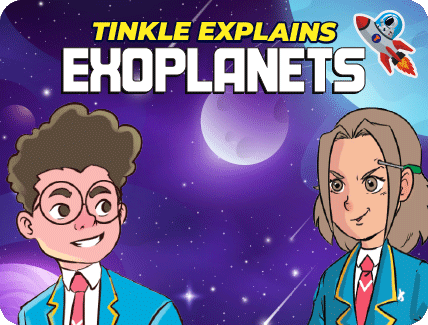

















Aadi is bored and wants a change of scenery. Rayna tells him about the ultimate change in scenery by taking him on a trip through space. Let’s check out their conversation!


1. Kepler-186f was the first rocky planet to be found within the habitable zone. It is also rather close to Earth in size. This exoplanet is in the Kepler-186 system, about 500 light years from Earth, in the constellation Cygnus. The system is also home to four other planets, which orbit a star that is half the size and mass of the Sun.
2. Kepler-452b was the first planet about the size of the Earth to be found in the habitable zone of a star that is also similar to the Sun. It is roughly 60 per cent larger than our home planet, making it a member of a class of planets called ‘super-Earths‘. It has an orbit of 385 days. Scientists believe that Kepler-452b is about 6 billion years old, while Earth is 4.2 billion years old. It is 1799 light years away from us.
3. TRAPPIST-1 d, TRAPPIST-1 e and TRAPPIST-1 f are three planets in the habitable zone of the star TRAPPIST-1. This system has seven rocky planets, likely made of similar stuff as Earth but in different proportions. 40 light years away, this is the largest batch of Earth-sized habitable zone planets found so far.
4. TOI 700 d, discovered in 2020, orbits a small, cool dwarf star and receives 86 per cent of the energy that the Sun provides to us. It is 20 per cent larger than Earth and orbits its star every 37 days. It is the outermost planet in its three-planet system. All three are thought to be tidally locked—they rotate once per orbit, so one side has constant daylight. The system is just over 100 light years away.
5. Kepler-1649c is most similar to Earth in size and estimated temperature, among all the exoplanets found by Kepler. Its mass is 1.2 times that of Earth’s. It takes 19.5 days to complete one orbit of its star from which it receives 75 per cent the amount of light we get from the Sun. It is located 301 light years away.
Click here to learn about Pulsars!